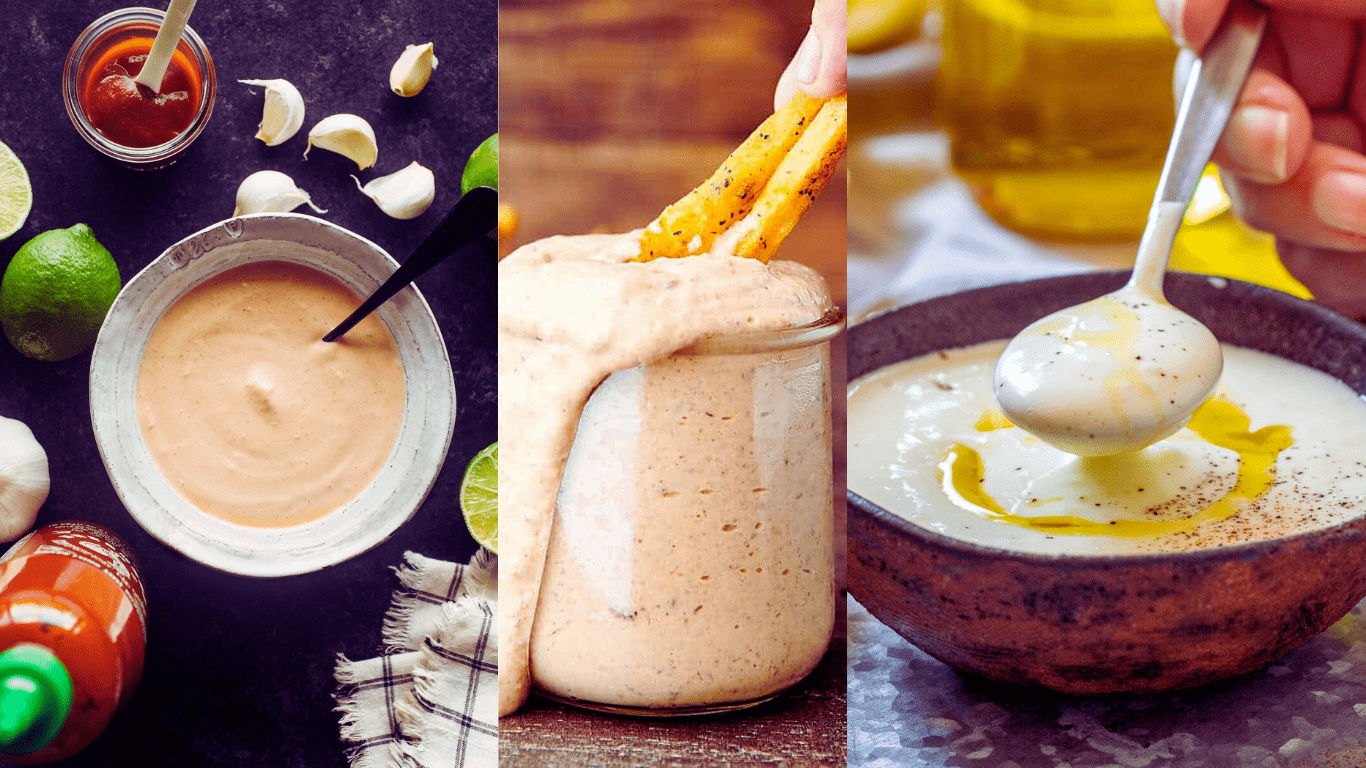Aioli is a traditional sauce that hails from the Mediterranean, particularly from regions like Provence in France, and it is also popular in Spain and Italy. This sauce is known for its simple yet pungent flavor profile which primarily consists of garlic and olive oil. The term “aioli” itself combines the French words for garlic (“ail”) and oil (“oli”).
The basic preparation involves emulsifying olive oil into mashed garlic to create a creamy, thick sauce. Traditionally, aioli does not contain egg, making it distinct from mayonnaise, although modern variations might include ingredients like egg yolks for stabilization, lemon juice for acidity, and additional seasonings for enhanced flavor. Aioli is commonly used as a condiment or dipping sauce, enriching the flavors of dishes such as seafood, vegetables, and breads.
The Origins of Aioli
The Mediterranean Roots

Aioli, a rich and pungent sauce made primarily from garlic and olive oil, has deep roots in Mediterranean cuisine. Its origin traces back to ancient times, possibly beginning in the Mediterranean and Egypt. This sauce has evolved as a staple in Mediterranean diets, reflecting the region’s abundant olive oil production.
Historically, aioli began as a simple emulsion of just garlic, olive oil, and salt, whipped together to form a creamy sauce. This concoction was initially popular across various Mediterranean communities where these ingredients were readily available. Over the centuries, aioli has become synonymous with the culinary traditions of the Western Mediterranean, especially in areas like Provence, and has been embraced as a regional specialty.
Aioli’s Journey West
Aioli’s integration into Western cuisines highlights a fascinating culinary journey from its Mediterranean roots to a beloved condiment across the globe. Originally a simple mixture of garlic and olive oil, aioli has become a staple in various Spanish regions like the Balearic Islands, Murcia, and Catalonia, reflecting its versatility and popularity in these areas.
As it moved westward, particularly into the United States, aioli transformed its traditional recipe. In modern Western food culture, aioli is often reinterpreted as a flavored mayonnaise rather than its original form. This adaptation usually involves adding garlic and other flavors to basic mayonnaise, making it more palatable and appealing to a broader audience who may not be familiar with the traditional version.
The transformation of aioli into a gourmet sauce in American cuisine is also evident in its usage in upscale and fast-casual dining, such as gourmet burger restaurants where different aioli flavors are used to enhance the taste and appeal of dishes.
Traditional Aioli Recipe
Ingredients
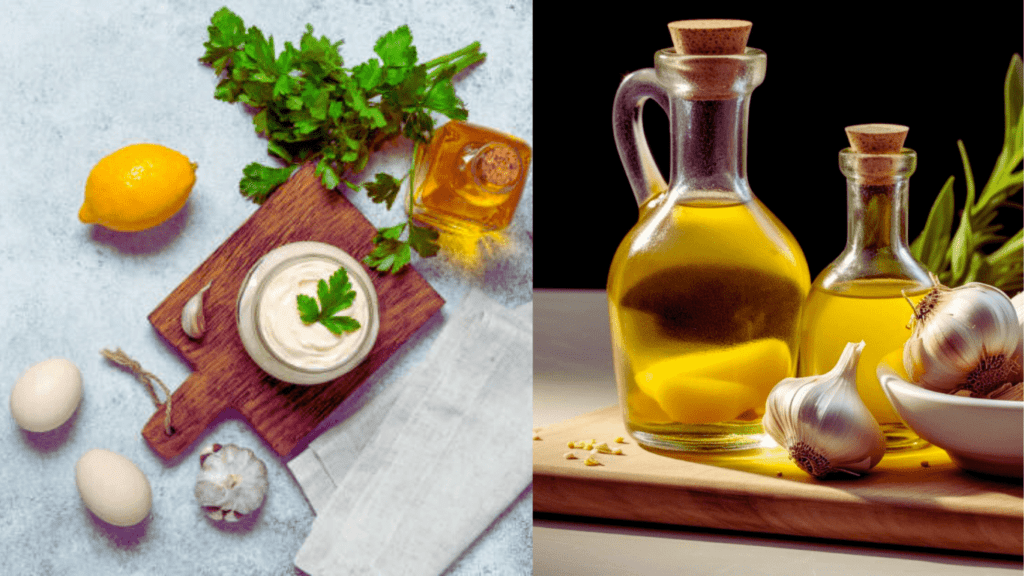
Traditional aioli, a Mediterranean sauce, is known for its simple yet pungent flavor primarily driven by garlic. The fundamental ingredients of traditional aioli include:
- Garlic: Fresh garlic cloves are the heart of aioli, providing the signature sharp, robust taste.
- Olive Oil: A high-quality extra virgin olive oil is used to emulsify with the garlic, creating a creamy texture and adding a subtle, fruity background note.
- Salt: A pinch of salt is essential to enhance the flavors of the garlic and oil.
Some variations and more modern recipes might include an egg yolk to help in emulsifying the sauce and lemon juice or vinegar for a slightly acidic balance, but these are not part of the most traditional versions made in the Mediterranean regions.
Step-by-Step Guide
To make traditional aioli, follow these steps:
- Prepare the Garlic: Peel and mince a few cloves of garlic. Use a mortar and pestle to mash the garlic into a paste with a pinch of salt, which helps break down the garlic and release its flavors.
- Mixing: Add the garlic paste to a mixing bowl. If you are using a more traditional recipe that does not include eggs, you can proceed to the next step. If you opt for a modern version with egg, whisk in one egg yolk to help emulsify the mixture.
- Emulsify with Oil: Gradually add about 1 cup of extra virgin olive oil, drop by drop at first, while continuously whisking. As the mixture begins to thicken, you can add the oil in a thin stream. It’s essential to add the oil slowly to ensure that the aioli emulsifies properly and does not separate.
- Season: Taste and adjust the seasoning with additional salt, and, if desired, add a splash of lemon juice for some acidity. Continue whisking until all ingredients are well incorporated and the aioli has reached a creamy consistency.
- Serve: Serve the aioli immediately or cover it and refrigerate to let the flavors meld together. Aioli is a versatile condiment perfect for spreading on sandwiches, as a dip for vegetables, or as a companion to seafood and meats.
Modern Twists on Aioli
Popular Flavor Additions
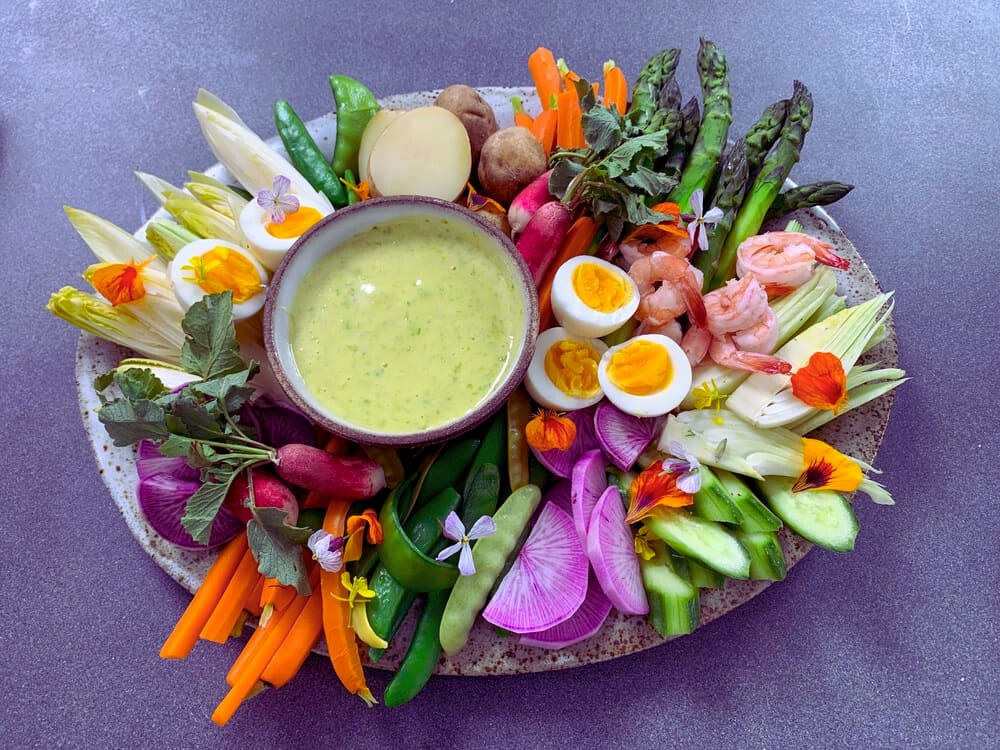
Modern aioli recipes can be enhanced with various flavorful ingredients to suit different tastes and cuisines. Here are some popular additions:
- Herbs: Fresh herbs like basil, dill, or tarragon add a fragrant touch to aioli.
- Spices: Incorporating spices such as smoked paprika, cayenne, or saffron can introduce a spicy or earthy flavor.
- Citrus: Lemon, lime, or orange zest and juice can give aioli a refreshing tang, enhancing its flavor profile.
- Garlic: Roasted garlic, in addition to or instead of raw garlic, offers a milder, sweeter alternative.
- Chiles: Adding chopped jalapeños, chipotle, or other chili peppers can provide a spicy kick.
- Fruit and Vegetables: Ingredients like avocados, mango, or roasted red peppers can create unique, flavorful variations.
- Mustard: Dijon or whole-grain mustard can add depth and a bit of heat.
These additions can be mixed and matched according to personal preference to create a custom aioli perfect for dipping, spreading, or dressing.
Aioli in Fusion Cuisine
Aioli has been adapted and infused into various cuisines beyond its Mediterranean roots, blending traditional elements with new, vibrant flavors. Here are some examples:
- Hazelnut Aioli: Integrating hazelnuts into traditional aioli presents a unique twist, adding a nutty flavor that complements both sweet and savory dishes.
- Aioli with Global Spices: Modern recipes often incorporate international spices such as chiles, ramps, or mango, which cater to a global palate while maintaining the creamy texture and garlic flavor of traditional aioli.
- Catalan Aioli: In Catalonia, aioli is often used as a sauce for meats, fish, or vegetables, showing its versatility in traditional Spanish cuisine.
- Aioli Fusion Mayonnaise Sauce: A fusion version that adds ‘zip’ with spices, ideal for enhancing seafood dishes like crab cakes or as a spread for various snacks.
- Grand Green Aioli: A version incorporating leafy herbs and lemon, typically served with vegetables and seafood in a Provençal style, but adaptable to different culinary contexts.
These examples show aioli’s flexibility in merging traditional and contemporary flavors, proving its enduring popularity across various cuisines.
Aioli vs. Mayonnaise
Ingredients Comparison
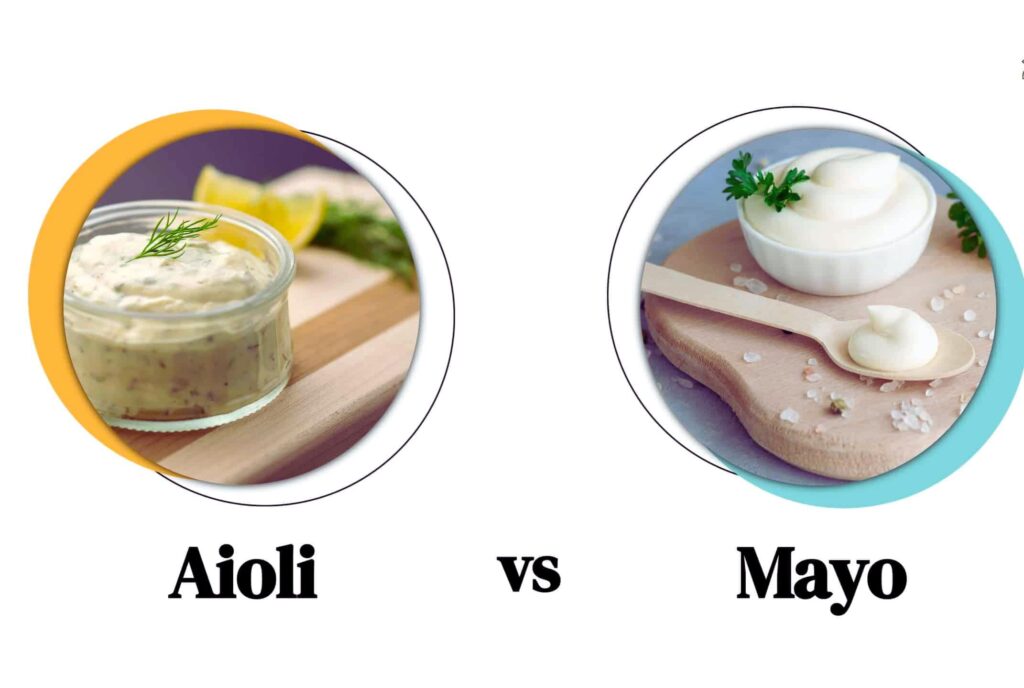
Aioli and mayonnaise, while similar in texture and appearance, differ fundamentally in their traditional ingredients and preparation methods:
- Aioli: Originally a simple emulsion made from garlic and olive oil. Some variations, especially those from French-Provencal cuisines, might include egg yolks to stabilize the emulsion and sometimes add lemon juice or vinegar for acidity.
- Mayonnaise: A stable emulsion primarily made from oil and egg yolks. Vinegar or lemon juice is also typically added for flavor and to help stabilize the emulsion further. Mayonnaise does not traditionally include garlic.
These differences highlight aioli’s more robust and pungent garlic flavor compared to the milder, creamier taste of mayonnaise.
Usage in Cuisine
Aioli and mayonnaise, though similar in consistency, are used differently across various cuisines due to their distinct flavors:
- Aioli: Traditionally used in Mediterranean cuisines, particularly Spanish and French, aioli is often served with seafood, vegetables, or as a dip for bread. Its robust garlic flavor makes it suitable for pairing with grilled meats or as a flavor enhancer in rustic dishes.
- Mayonnaise: More versatile due to its milder flavor, mayonnaise is commonly used as a spread in sandwiches and burgers, and as a base in salad dressings and sauces across a variety of international cuisines. It is also a key ingredient in dishes like coleslaw, potato salad, and various cold salads.
These applications reflect their ingredients; aioli’s garlic intensity suits more robust, savory dishes, while mayonnaise’s creamy texture complements a wider range of lighter, often cold, dishes.
Health Aspects of Aioli
Benefits
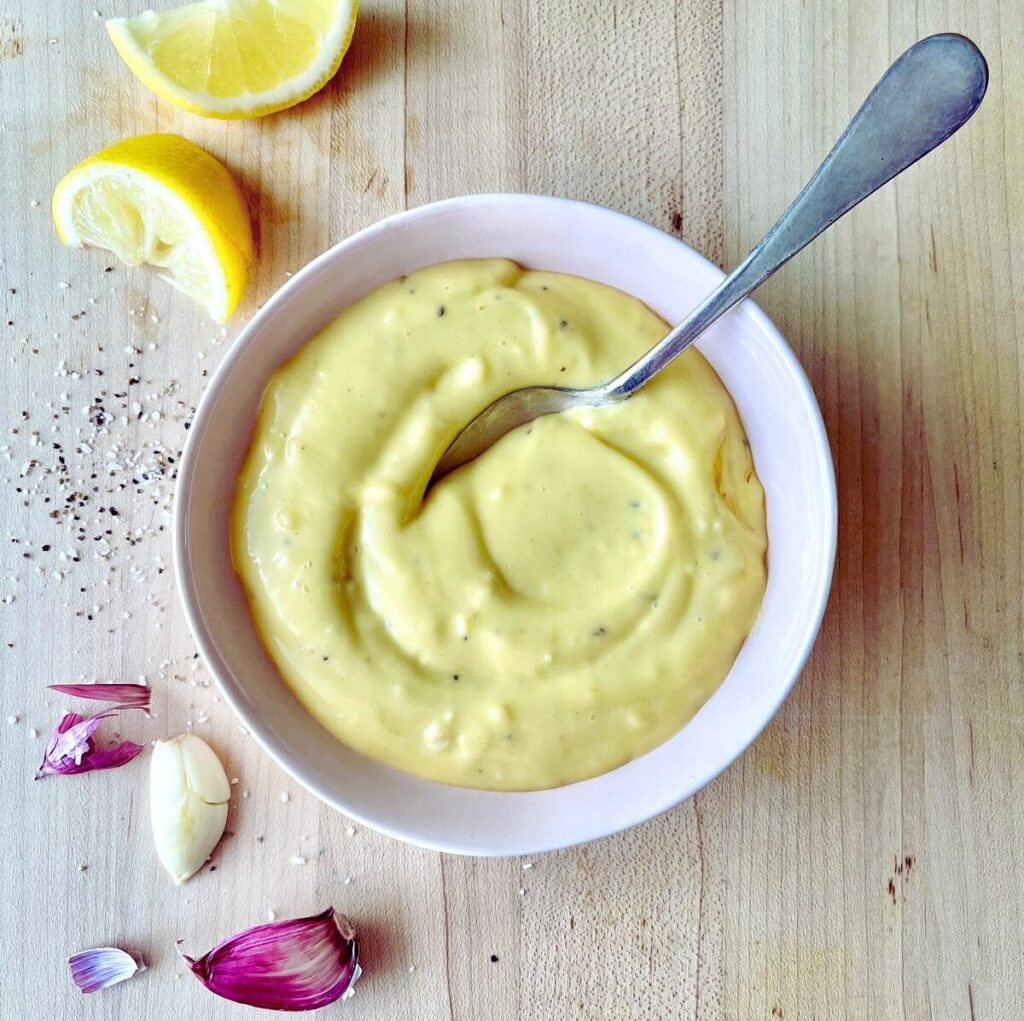
Aioli, while being a tasty addition to many dishes, offers limited health benefits mainly due to its high-fat content. However, it does provide some specific health advantages:
- Flavor Enhancement: Aioli can enhance the flavor and palatability of dishes, which might encourage the consumption of healthier, but less palatable, foods like vegetables.
- Nutritional Content: Traditional aioli contains garlic, which has well-documented health benefits, including anti-inflammatory properties and potential cardiovascular benefits.
- Potential Health Benefits: Some claims suggest that aioli can be beneficial for skin and hair health, and heart health, and may help control blood sugar and glucose levels. However, these benefits are primarily attributed to the garlic in aioli rather than the sauce as a whole.
It is important to consume aioli in moderation due to its high calorie and fat content, which can contribute to weight gain if consumed excessively.
Drawbacks
While aioli can enhance the flavor of many dishes, it also presents several health drawbacks primarily due to its high fat, cholesterol, and calorie content:
- High in Calories and Fat: A typical serving of aioli contains a significant amount of calories and fat, which can contribute to weight gain if consumed in large quantities.
- Limited Nutritional Value: Aioli has minimal macronutrients other than fats. It does not offer proteins, carbs, or dietary fiber, which limits its nutritional benefit.
- High Cholesterol Levels: The primary ingredients in aioli include oils that are high in cholesterol. Regular consumption of high-cholesterol foods can lead to increased cholesterol levels in the body, potentially increasing the risk of heart disease.
- Heart Health Risks: Despite some potential benefits from garlic, the overall composition of aioli might pose risks to heart health due to its fat and cholesterol content.
Moderation is key when including aioli in a diet, especially for individuals with dietary restrictions or heart concerns.
Where to Find Aioli
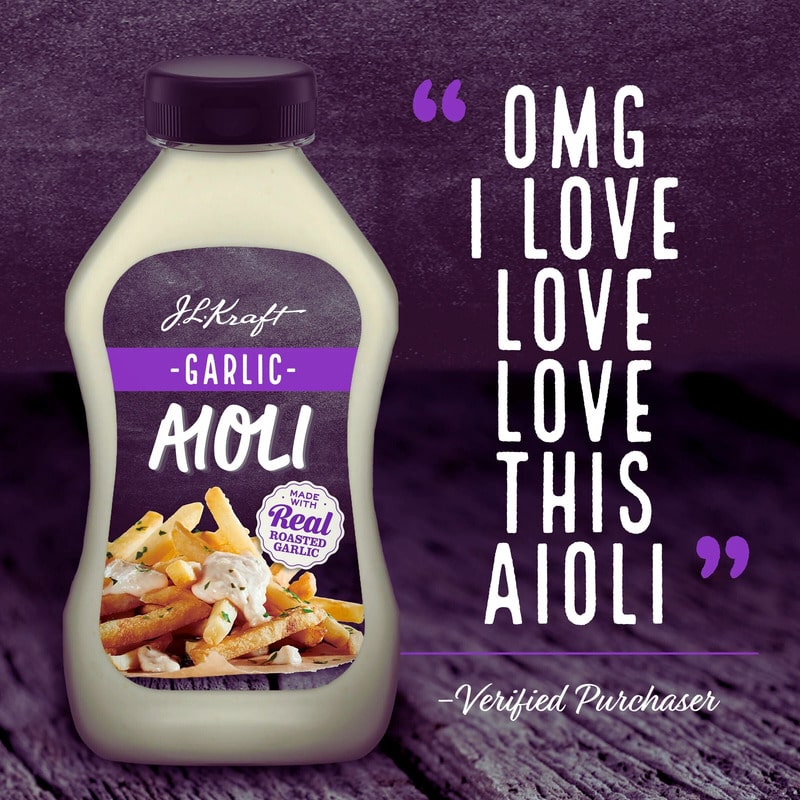
You can find aioli in various places, ranging from online stores to local supermarkets and specialty food shops. Here are some specific tips on where to look:
- Online Retailers: Amazon offers a variety of aioli brands and flavors, such as the Iberia Aioli Sauce, which features a smooth texture and mild taste. You can also find specialized aioli flavors like Everything Aioli and Bacon Aioli on Amazon.
- Specialty Food Stores: For more unique flavors like Zesty Jalapeño, Herby Yuzu, or Sunshine Chili, check out specialty stores or online platforms like Haven’s Kitchen.
- Local Supermarkets: Many local supermarkets stock various types of aioli in the condiment aisle. Look for both branded and store-brand options.
- Gourmet Shops and Farmers’ Markets: These places often carry artisanal or locally-made aioli varieties that might offer a more authentic taste compared to mass-produced versions.
- Making Your Own: If you prefer homemade aioli, there are numerous recipes online that guide you through the process using simple ingredients like oil, garlic, and lemon juice.
Conclusion
Aioli is more than just a sauce; it’s a cultural icon that embodies the essence of Mediterranean cuisine. Whether traditional or infused with new flavors, aioli remains a beloved addition to any culinary enthusiast’s palette.
Read also: What is Kratom?
FAQs
Q. What are the key differences between aioli and mayonnaise?
Aioli is primarily a garlic and olive oil emulsion, potentially without eggs, while mayonnaise is based on eggs and vegetable oil.
Q. Can aioli be made without eggs?
Yes, the traditional recipe for aioli does not use eggs, though many modern variations include them to aid in emulsification.
Q. Is aioli gluten-free?
Yes, traditional aioli is gluten-free, being made mainly from garlic, oil, and salt.
Q. What dishes pair well with aioli?
Aioli pairs wonderfully with seafood, grilled vegetables, and as a spread on artisan breads.
Q. How should I store homemade aioli?
Homemade aioli should be stored in an airtight container in the refrigerator and ideally used within a week.
